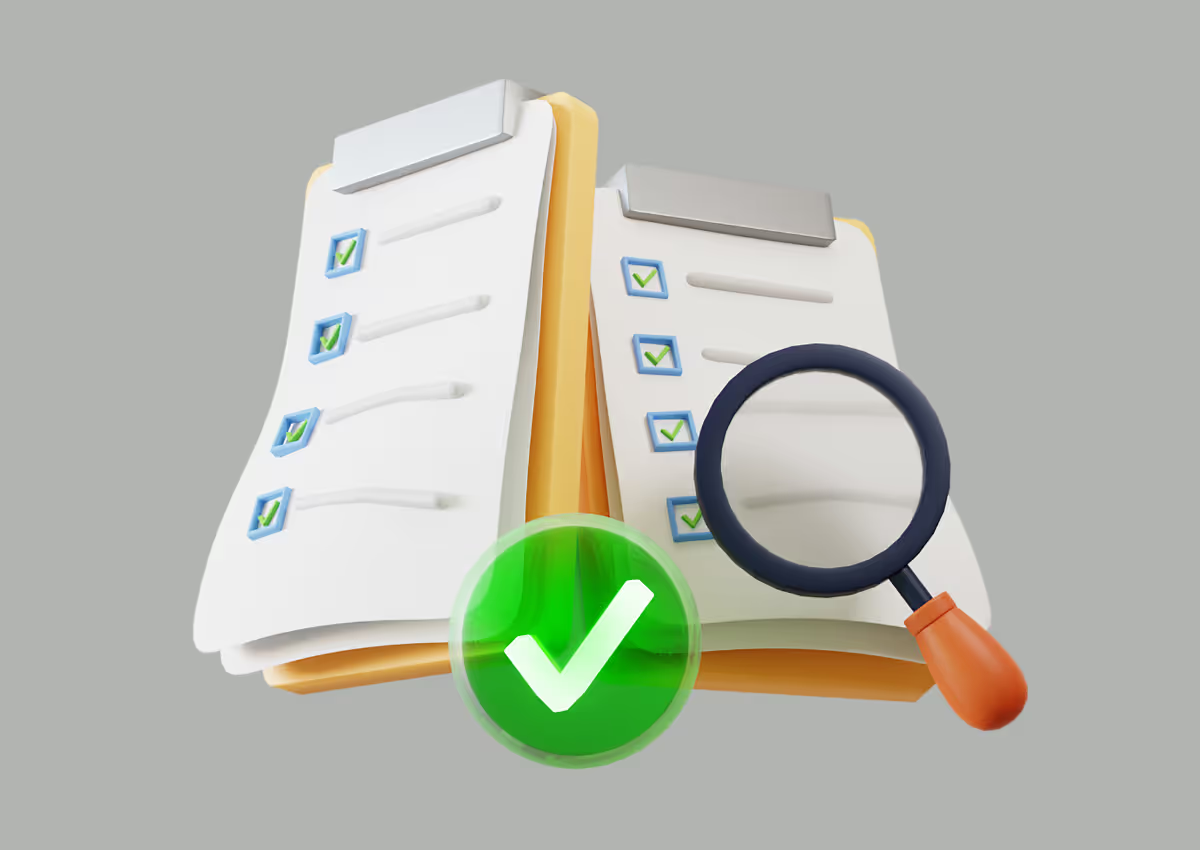Bank reconciliation: Definitions, examples, and tips for a smooth process
This post will cover the basics of bank reconciliation, including examples, how to do monthly reconciliations, and tips for a smooth process.

Bank reconciliation is a key process for accountants to ensure financial records align with bank statements. It’s at the heart of a successful month-end close as it verifies that your financial data is accurate and up to date.
However, it can also be stressful for accounting teams, especially when doing the process manually. But with a clear understanding of the process and the right accounting tools, you can simplify bank reconciliations.
This post will cover the basics of bank reconciliation, including examples, how to do monthly reconciliations, and tips for a smooth process.
What is bank reconciliation?
Bank reconciliation is the process of comparing a company's general ledger (GL) with its bank statements. This means meticulously matching transactions — such as deposits, withdrawals, and fees — recorded in the GL with those reported by the bank.
The goal of a bank reconciliation is to ensure the accuracy and integrity of financial records. It also allows accountants to identify and resolve discrepancies and flag potentially fraudulent transactions.

Importance of bank reconciliation
Bank reconciliation ensures the accuracy and reliability of a company’s financial records by verifying that all transactions are accounted for and reflected in the GL. Additionally, an accurate bank reconciliation provides a clear and up-to-date picture of the company's financial position.
Let’s take a closer look at the benefits of bank reconciliation for businesses and accountants.
Error identification
Bank reconciliation enables you to identify and correct any inaccuracies or discrepancies between your GL and bank statements. These discrepancies can include duplicate entries, manual errors, billing errors, timing issues, and more.
Fraud detection
A regular reconciliation helps identify any unauthorized transactions early, allowing accounting teams to detect fraudulent activities that could otherwise severely impact the business.
Improved cash management
By providing an accurate, up-to-date snapshot of your financial status, bank reconciliation helps you manage cash flow effectively. This supports strategic decision-making and resource allocation.
Compliance and audit readiness
Bank reconciliations ensure that your financial records comply with relevant laws and regulations. This process also prepares your business for audits with up-to-date and accurate records.
Challenges with bank reconciliation
While bank reconciliation offers numerous benefits, it's not without challenges, including:
- Manual bank reconciliation can be a time-consuming process, especially for businesses with numerous transactions or complex banking arrangements. Automating the process using accounting software can help mitigate this challenge (more on this below).
- Manual bank reconciliations have an inherent risk of human errors, such as data entry mistakes or overlooking transactions. Implementing robust controls and leveraging technology can minimize these risks.
- The bank reconciliation process often relies on the bank's provision of accurate and timely data. Any delays or discrepancies in the bank statements can affect the reconciliation process. Open banking can improve how you manage financial data and simplify the reconciliation process.
How to do bank reconciliation in 7 steps
The main goal of bank reconciliation is to ensure the GL matches the bank statement. The process to do so typically looks like this:
1. Gather documents
Collect the company's bank statements, accounting records, and supporting documentation, such as deposit slips, checks, and receipts.
2. Compare balances
Compare the ending balance on the bank statement with the company's ending cash balance in the GL. Note any differences or discrepancies.
3. Identify outstanding transactions
Identify any outstanding checks or deposits that are recorded in the company's records but have not yet cleared the bank. Mark these as "outstanding" in the reconciliation process.
4. Record bank charges and interest
Include any bank charges, fees, or interest earned that may not have been recorded in the company's GL. Adjust the company's records accordingly.
5. Reconcile deposits and withdrawals
Match each deposit and withdrawal on the bank statement with the corresponding entry in the company's records. Account for any timing differences or errors.
6. Address discrepancies
Investigate discrepancies between the bank statement and the GL. Verify the accuracy of transactions, identify errors, and take necessary corrective actions (more on this below).
7. Update records
Adjust the GL to reflect the reconciled bank statement balance. This ensures consistency and accuracy in financial reporting.
Common reasons for discrepancies in bank reconciliations
We’ve mentioned discrepancies between records at length. But where do these typically come from? These are the most common reasons for discrepancies between your financial records and bank statements:
- Checks issued by the business that haven’t yet been cleared by the bank
- Deposits recorded in the books but not yet reflected in the bank statement
- Service fees or penalties charged by the bank but not recorded in the books
- Mistakes in recording transactions in the books or errors in the bank statement
- Automatic payments or direct deposits not yet recorded in the company’s books
The reconciliation process is an opportunity to address these common discrepancies, like adding services fees to your financial records and correcting mistakes.
Bank reconciliation example
Now that we know the process and the challenges accountants typically encounter, let’s put it all into practice with a bank reconciliation example.
Let's consider a business that receives a bank statement indicating a balance of $10,000 for the month of December. Upon comparing this statement with their internal records, the accounting team discovers several discrepancies:
- Deposits: Deposits recorded in the company’s internal records amount to $9,500, The accounting team identifies that a deposit of $500 is missing from their records. By adding this missing deposit, the internal records will align with the bank statement.
- Withdrawals: The internal records show a withdrawal of $2,000, while the bank statement does not reflect this. The accounting team identifies that the bank has not yet processed the withdrawal. Once they do so, the internal records will match the bank statement.
- Service fee: The bank statement lists a $50 service fee not recorded in the GL. To reconcile this discrepancy, the accounting team records the $50 service fee as an expense in their internal records.
Now that the accounting team has reconciled these discrepancies, the balances in the bank statement and GL match. The reconciliation process is complete.
Tips to simplify bank reconciliation
While the example above reflects a quick reconciliation process, the reality is often more complicated for accounting teams.
The larger the business, the more transactions will occur each period, making reconciliation a time-consuming process. When done hundreds of times, this simple process becomes time-consuming quickly.
But it doesn’t have to be. With the following tips, you can simplify the process, cutting down the workload for your team.
1. Manage the reconciliation like a project
Project management principles come in handy when it comes to reconciliation, giving teams a clear and efficient workflow.
Start by segregating duties and assigning tasks to the right person on your team. For example, it’s often a staff accountant’s responsibility to reconcile the bank statement and GL. Then, the accounting manager reviews and approves the reconciliation.
Next, set relative deadlines for each task. For example, the staff accountant must complete the reconciliation five days after receiving the bank statement. Then, the accounting manager must review and approve the reconciliation two days after it’s complete.
The right accounting software can further simplify the process with task templates you can use each month and automated notifications to keep everyone on track. This brings us to the next tip.
2. Use bank reconciliation software
If you’re used to doing reconciliations manually, you know it can feel like a burden for accountants. Reviewing each transaction line by line can take days or even weeks depending on the size of the company and the number of transactions.
But software can take care of much of the manual work, so accountants can focus on resolving discrepancies. This can significantly cut down the time it takes to perform the reconciliation each period, giving accountants time back to focus on more strategic analysis.
Explore bank reconciliation software options to find the right one for your business.
3. Save time with automation
Once you’ve implemented bank reconciliation software, you can leverage automation to match regular transactions automatically, leaving only the discrepancies to resolve.
There are two types of automation you can use depending on how you record transactions:
- Automated transaction creation: Smaller businesses tend to create transactions on the GL based on the information from bank statements. In this case, you can use automated transaction creation features to create new transactions on the GL based on transaction data.
- Auto-matching rules: Larger businesses often use software integrations to create transactions in their enterprise resource planning platform (ERP), like NetSuite. In this instance, you can use automation to match transactions between the bank statement and the GL. Automation rules can be used to find matches based on amounts, transaction dates, and other fields like merchant or description, removing the manual process.
Regardless of which automation feature you use, streamlining your bank reconciliation process brings greater efficiency and time savings to your accounting team.
Learn more about bank reconciliation
Still have questions about bank reconciliation? Here are the answers to the most common questions.
Is bank reconciliation only necessary for large businesses?
No, bank reconciliations are essential for businesses of all sizes. Regardless of company size, reconciling bank statements ensures accurate financial reporting and helps identify errors or discrepancies. Every business can benefit from using bank reconciliation software to simplify the process and ensure accurate financial records.
How can accounting software simplify the bank reconciliation process?
Accounting software can automate the bank reconciliation process by importing bank transactions, matching them with internal records, and flagging discrepancies. This reduces manual effort and improves efficiency, allowing accountants to focus only on resolving discrepancies.
Can bank reconciliation be outsourced?
Yes, some businesses choose to outsource their bank reconciliation tasks to specialized accounting firms or service providers. This allows them to focus on core business activities while ensuring accurate financial records. Another option is using software to streamline bank reconciliation and the monthly close process.
How long does bank reconciliation typically take?
The time required for bank reconciliation depends on the volume of transactions and the complexity of banking arrangements. The process can be expedited with the help of accounting software, but it is essential to allocate sufficient time for accurate reconciliation.
What should I do if I discover an error during bank reconciliation?
If you discover an error during bank reconciliation, you should investigate the cause of the error. This may involve reviewing supporting documents, contacting the bank for clarification, or checking for mistakes in your accounting records. Once you identify the source of the error, make the necessary adjustments to reconcile the discrepancy and ensure accurate financial reporting.
Simplify bank reconciliation with automation software and AI
Bank reconciliations don’t have to be a burden on your accounting team. Accounting software can transform it from a lengthy process to an automated task. This allows your team to proactively stay on top of cash transactions and balances, making the end of the month a breeze.
Netgain’s close accounting solutions allow you to say goodbye to outdated file transfers and manual bank reconciliation. Connect your bank and manage bank reconciliations seamlessly — all within NetSuite — and gain real-time, precise visibility into your company's cash position.
Explore Netgain’s close accounting solutions and start your journey to a seamless monthly close.

